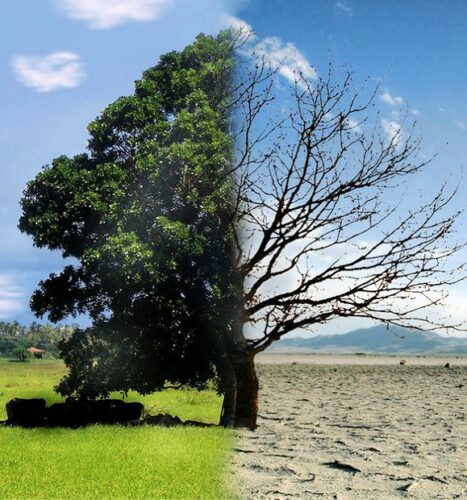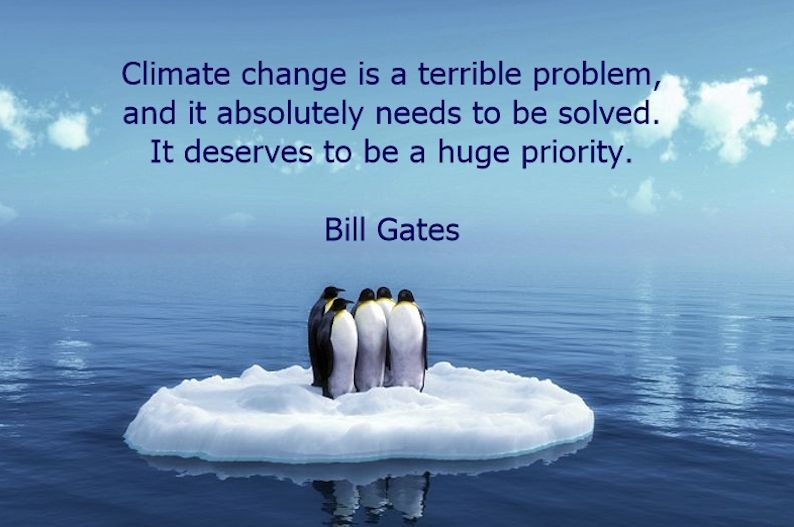
Climate change test about global warming, environment, energy, pollution, weather events and so on; find out what you should know about this issue.
Today, more than ever before, life must be characterized by a sense of Universal responsibility, not only nation to nation and human to human, but also human to other forms of life.
Dalai Lama
We do not inherit the earth from our ancestors; we borrow it from our children.
Chief Seattle
Life is energy, save, care and don’t waste it! It’s so expensive!
Carl William Brown
Climate change is a terrible problem, and it absolutely needs to be solved. It deserves to be a huge priority.
Bill Gates
Climate change is happening, humans are causing it, and I think this is perhaps the most serious environmental issue facing us.
Bill Nye
The earth, our home, is beginning to look more and more like an immense pile of filth.
Pope Francis
We cannot solve our problems with the same thinking we used when we created them.
Albert Einstein
We’ve been given a warning by science, and a wake-up call by nature; it is up to us now to heed them.
Bill McKibben
Preservation of our environment is not a liberal or conservative challenge, it’s common sense.
Ronald Reagan
The Earth is not dying-it is being killed. And the people who are killing it have names and addresses.
Utah Phillips
It’s not a choice between our environment and our economy; it’s a choice between prosperity and decline.
Barack Obama
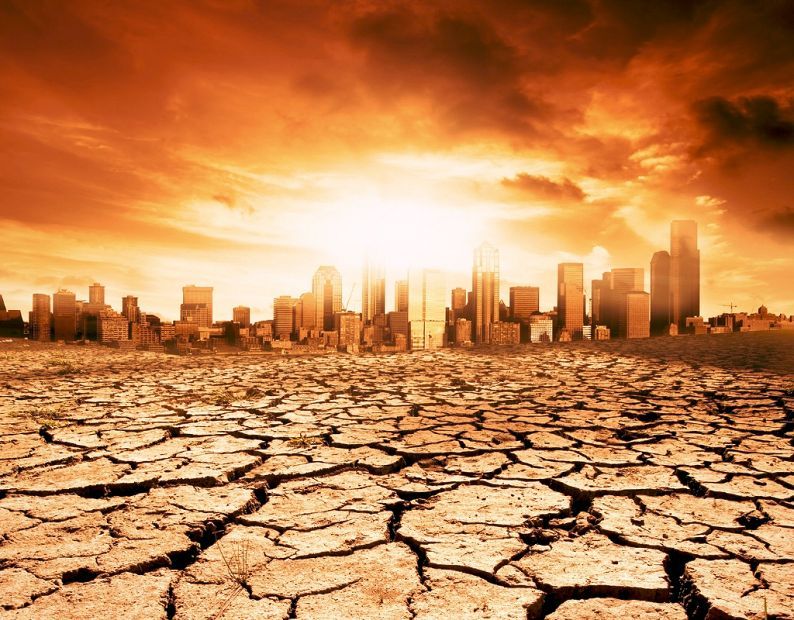
How much do you know about the world’s greatest threat? We’re talking, of course, about climate change.
Test your knowledge with this quiz:
1) Wasting less food is a way to reduce greenhouse gas emissions.
A. true (x)
B. false
More than a third of food produced globally never makes it to the table. Some of this wasted food spoils in transit, while consumers throw some of this food out. During the production, harvesting, transporting, and packaging of the wasted food, more than 3.3 billion metric tons of carbon dioxide is emitted.
2) Which of the following is a greenhouse gas?
A. CO2
B. CH4
C. Water vapor
D. All of the above (x)
Greenhouse gases may be a result of natural occurrence or human activity. These gases include water vapor, carbon dioxide, methane, nitrous oxide, and ozone. Fluorinated gases are also considered to be greenhouse gases.
3) What is the Greenhouse Effect?
A. The name of climate change legislation that passed by congress
B. When you paint your house green to become an environmentalist
C. When the gasses in our atmosphere trap heat and block it from escaping our planet (x)
D. When you build a greenhouse
The Earth receives solar radiation from the sun. Passing through the atmosphere, some radiation is absorbed by the Earth, while some is reflected back to space. When the exchange of incoming and outgoing radiation occurs, some of the radiation becomes trapped by gases in the atmosphere. This creates a “greenhouse” effect and warms the planet.
4) Which of the following are consequences associated with climate change?
A. The ice sheets are declining, glaciers are in retreat globally, and our oceans are more acidic than ever
B. Surface temperatures are setting new heat records about each year
C. More extreme weather like droughts, heat waves, and hurricanes
D. Global sea levels are rising at an alarmingly fast rate — 17 centimeters (6.7 inches) in the last century alone and going higher.
E. All of the above (x)
All of these are problems associated with climate change. The majority of scientists agree that many of these effects are caused by human contribution to the greenhouse effect. Extreme weather events, droughts, heat waves, and rising sea levels will have devastating effects on the world’s poorest countries and communities.
5) What can you do to help fight climate change?
A. Divest from fossil fuel companies
B. Engage yourself in the science behind climate change
C. Vote for political candidates who will advocate for climate-related legislation and policy improvements
D. All of the above (x)
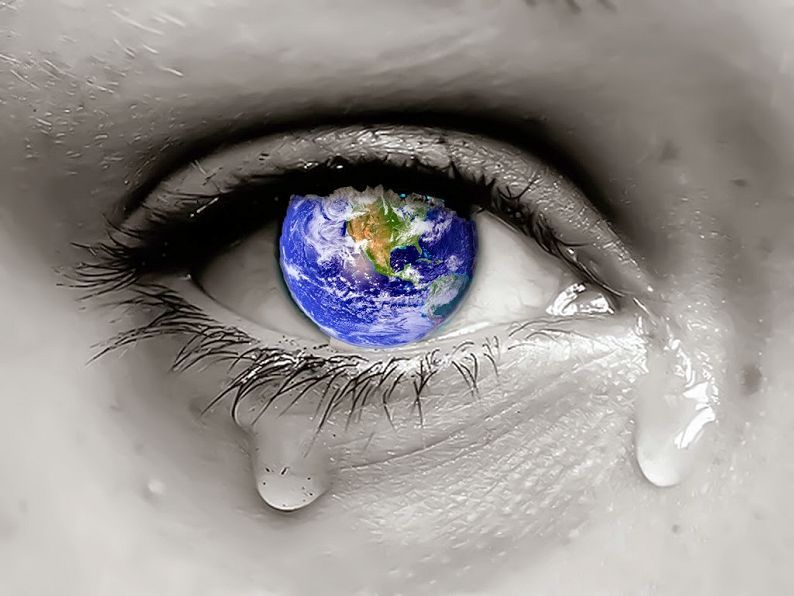
6) The overwhelming majority of scientists agree that climate change is real and caused by humans.
A. True x
B. False
Studies show that 97 percent (or more) of climate scientists who are actively publishing agree that climate change is likely due to human activity. Nearly 200 scientific organizations across the globe have issued statements that publicly endorse this view.
7) What was agreed to in the “Paris Agreement” that came out of COP-21, held in Paris in 2015?
A. To protect biodiversity and end the deforestation of the world’s rainforests
B. To keep global temperature rise well below 2°C pre-industrial levels and to pursue a path to limit warming to 1.5°C (x)
C. To limit sea level rise to 3 feet above current levels
D. To pursue a goal of 100% clean, renewable energy
The Paris Agreement aims to keep the overall increase in global temperatures below 2 degrees Celsius, with the hope of limiting it to 1.5 degrees Celsius. Scientists believe that these are the largest increases in global temperature that we could experience without causing catastrophic change to the Earth’s climate.
8) Which of these countries emits the most carbon dioxide?
A. China (x)
B. USA
C. UK
D. Russia
According to the EPA, China is currently the top emitter of carbon dioxide, accounting for 30% of global carbon emissions. The United States ranks as the second top emitter at 15%.
9) What percentage of the global greenhouse gas emissions does the transportation sector emit?
A. 1%
B. 14% (x)
C. 33%
D. 70%
The transportation sector emits 14% of global greenhouse gas emissions. Most of this involves fossil fuels burned for road, rail, air, and marine transportation, since petroleum-based fuels (i.e., gasoline and diesel) account for almost all of the world’s transportation energy.
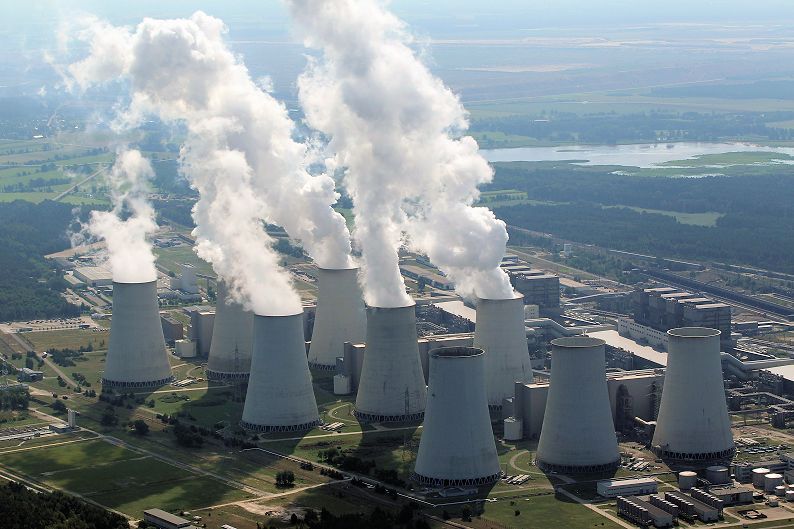
10) Globally, which of the following economic sectors emits the largest percentage of greenhouse gas emissions?
A. Transportation
B. Buildings
C. Industry
D. Electricity and heat production (x)
The electricity and heat production sector emits the largest percentage of global greenhouse gas emissions at 25%. Agriculture, forestry, and other land use sector is a close second at 24%.
11) How much has the average global temperature risen by since 1880 (in Fahrenheit)?
A. 0.5 degrees
B. 1.69 degrees (x)
C. 5 degrees
The average global temperature has risen by 1.69 degrees F (0.94 degrees C) since the twentieth century with more significant warming toward the poles than in the equatorial region.
12) No place on Earth is colder today than it was 100 years ago.
A. True
B. False (x)
Although most locations on the planet have recorded increased temperatures since 1900, changes in global ocean and atmospheric circulation patterns have created small-scale temperature decreases in a few local regions.
13) Which of the following gases does not trap heat?
A. Carbon dioxide
B. Nitrogen (x)
C. Water vapor
D. Methane
Heat-trapping greenhouse gases absorb and emit radiation within the thermal infrared range. Water vapor, carbon dioxide and methane are Earth’s most abundant greenhouse gases. Nitrogen, which makes up 80 percent of Earth’s atmosphere, is not a greenhouse gas. This is because its molecules, which contain two atoms of the same element (nitrogen), are unaffected by infrared light.
14) As average global temperature rises,
A. Average precipitation increases (x)
B. Average precipitation decreases
C. Average precipitation remains unchanged
Higher temperatures give rise to a more active water cycle, which means faster and greater evaporation and precipitation and more extreme weather events.
15) Where have some of the strongest and earliest impacts of global warming occurred?
A. In the tropics
B. In northern latitudes (x)
C. Impacts of global warming are distributed equally all over the planet.
Some of the fastest-warming regions on the planet include Alaska, Greenland and Siberia. These Arctic environments are highly sensitive to even small temperature increases, which can melt sea ice, ice sheets and permafrost, and lead to changes in Earth’s reflectance (“albedo”).
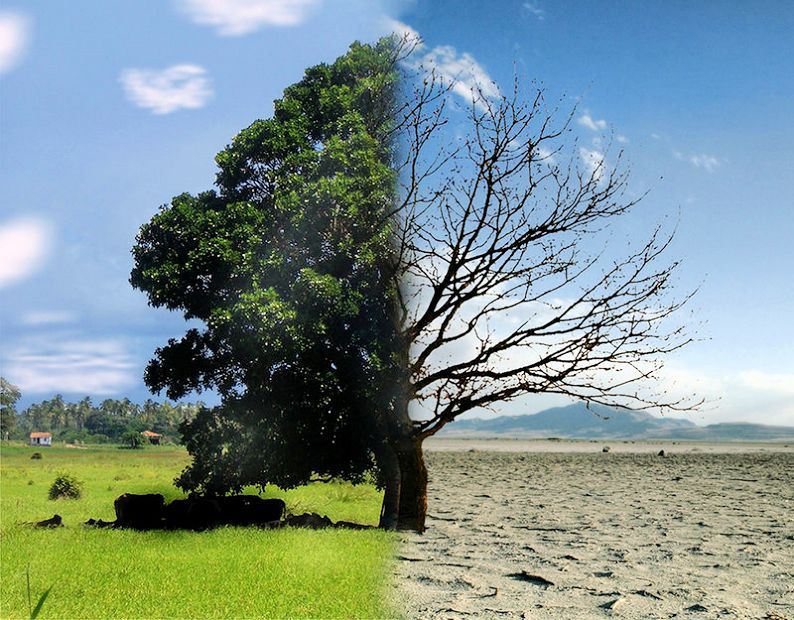
16) Compared to other greenhouse gases, carbon dioxide is the most effective at trapping heat near the Earth’s surface.
A. True
B. False (x)
Water vapor actually has more heat-trapping power than carbon dioxide. It is also more abundant. But carbon dioxide and water vapor interact in crucial ways: More carbon dioxide means the atmosphere gets warmer, which then creates more water vapor, which traps heat and warms the atmosphere even more.
17) Some kinds of pollution in the atmosphere can act to cool the planet by reducing the amount of solar radiation that reaches Earth’s surface.
A. True (x)
B. False
Air pollution can take the form of fine particles called “aerosols,” which both absorb and scatter the sun’s radiation. Both natural and man-made aerosols, such as dust, sea salt, soot and sulfates, affect the climate by reflecting radiation that is transmitted through the atmosphere.
18) Earth has been warmer in the past than it is today.
A. True (x)
B. False
Global temperatures during some of the past interglacial periods have exceeded the average temperatures we observe today, although you would have to go back more than three million years to find a period that was clearly warmer than today. Temperatures in the most recent decade have now exceeded the warmth of the previous Eemian interglacial.
19) If you removed the atmosphere’s natural greenhouse effect, and everything else stayed the same, Earth’s temperature would be:
A. 10 to 20°F (6 to 11°C) warmer
B. 30 to 40°F (17 to 22°C) warmer
C. 10 to 20°F (6 to 11°C) cooler
D. 50 to 60°F (28 to 33°C) cooler (x)
The greenhouse effect is a naturally occurring physical process that warms the Earth’s surface with energy from the atmosphere. Without the effect, Earth’s average surface temperature would be well below freezing.
20) How do scientists collect evidence about climate?
A. Using remote sensing from space with satellites
B. By ground-based measurements of surface temperature, carbon dioxide concentration and sea level
C. By collecting “proxy data” from tree rings, ice cores and historical records
D. All of the above (x)
For the past few decades, scientists have had the benefit of global satellite data. We have accurate ground-based measurements that reach back just over a century. “Proxy” methods, such as tree ring and ice core analysis, are used to reconstruct climate records before the rise of modern instruments.

If you are interested in climate and environment matters you can also read
Environment questions and answers
Environment and climate debate
Free download – 20 climate connection challenges for classrooms across the world

